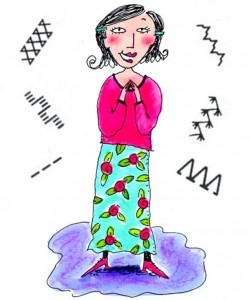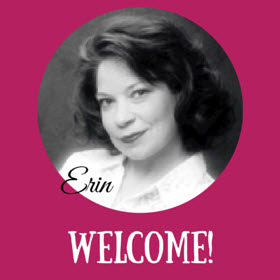 Even beginners notice one thing right away – every machine prominently advertises the number of stitches offered. It’s common to ask yourself, “How many built in stitches do I need?” Your eyes will start to glaze over just contemplating the options.
Even beginners notice one thing right away – every machine prominently advertises the number of stitches offered. It’s common to ask yourself, “How many built in stitches do I need?” Your eyes will start to glaze over just contemplating the options.
“Hmmm… a nice, basic machine with 10 stitches. I think I’ll take it.”
“Oh, wait a minute…here’s one with 30. Maybe that’s the one I should get.”
“Hold the phone – here’s one with 150 different built-in stitches!”
What you’re really trying to figure out is whether a machine with 30 stitches is better for you than one with only 10 and too many options slows down the entire decision making process!
What exactly ARE built in stitches, anyway? Well, they’re the stitch patterns programmed into the sewing machine. Every type of stitch is formed by a set of movements made by the needle. The movement necessary for a straight stitch is different than the movements necessary for an overcast stitch. When the manufacturer decides which stitches will be “built in” to the machine, they must include the necessary programming to make the needle move correctly to form each stitch.
Built in stitches cannot be added to a machine later (except for some of the most expensive, high end machines). Built in stitches are one of the things you can’t change about your sewing machine later making it a critical decision making factor when shopping for a new one.
Ever order ice cream at McDonalds? Vanilla or chocolate. Take your pick. The average decision making time is probably less than 20 seconds. Compare that to Baskin & Robbins with their 31 flavors or the ice cream case at the grocery store where Ben & Jerry’s currently showcase 111 flavors. Throw in those sinfully delicious parlors where you mix your own flavors and toppings and the choices are literally endless. Now, the decision time is significantly increased as we ponder the possibilities and drool on glass cases. (How many of us parents have prodded a child on the back of the head and said “Come on! PICK one already!”)
You’re staring at your computer screen – your “glass case” – and the built-in stitch count options are starting to blur into a knot of choices. Easy to just hit the little x in the upper corner of your browser and postpone the decision until you can sort through what it all means.
Let’s see if we can make it easier on you.
Answer the following questions.
Am I going to use my sewing machine for:
- Mending clothes?
- Making clothes?
- Stretchy fabrics like jersey and knits?
- Lace and delicate fabrics?
- Quilting?
- Fun and imaginative crafts and scrapbooking accessories?
- Machine embroidery?
Each “yes” answer increases the number of built-in stitches you should consider in a beginner sewing machine.
Mending clothes – a straight stitch, zigzag, and blind hem stitch are about all you need.
Making clothes – add an overcasting or overlocking stitch
Stretchy fabrics – add a handful of stretch stitches like zigzag stretch, blind hem stretch, and an overlocking or overcasting stretch stitch
Lace and delicate fabrics – a simple decorative stitch or two can help enhance the look of attached lace
Quilting – add at least a “hand look” quilting stitch and a few more decorative stitches to use in joining or accessorizing quilt squares
Fun and imaginative crafts and scrapbooking – decorative stitches in shapes like hearts and stars and designs like ivy and flowers can easily be added to unique projects and scrapbooking pages so add in a few more decorative stitches
Machine embroidery – add a few more decorative stitches to the mix so you have plenty of options for shapes and patterns
For just the basics, take a look at the Brother XL2600i which still has a nice selection of 25 built in stitches and costs under $100.
If you want as many stitches as possible plus fonts for monogramming, you might be interested in something like the Brother PC420 Project Runway sewing machine. Built in stitch count is an incredible 294 including utility stitches, decorative, stitches, fonts, and buttonholes.
In the middle might be the Brother SE 400 Embroidery Machine – not as many stitches as the PC420 but still a very versatile set of stitches plus built in machine embroidery. If you like the idea of being able to do multiple kinds of fabric crafts – sewing, quilting, and embroidery – then this machine is a very reasonable option.
If this doesn’t help you decide how many built in stitches you need, don’t hesitate to contact an instructor who gives sewing machine lessons for beginners and pick their brain. They’ll walk you through the machine choices and stitch options they find are best suited for your particular project goals.

I just bought this machine. Which stitch should I use for overcasting a raw edge? Thanks